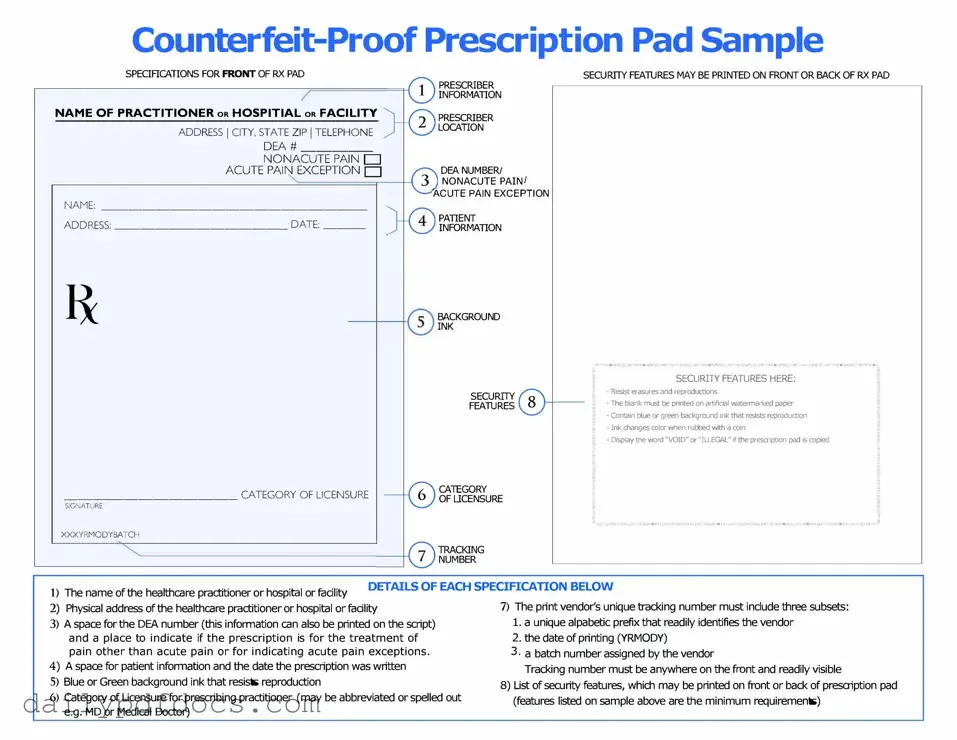What is the Prescription Pad form?
The Prescription Pad form is a standardized document used by healthcare providers to prescribe medications to patients. It ensures that the necessary information is clearly communicated, including the patient's details, the medication prescribed, dosage, and any special instructions. This form helps streamline the prescription process, making it easier for pharmacists to dispense medications accurately and safely.
How do I fill out the Prescription Pad form correctly?
To fill out the Prescription Pad form, start by entering the patient's name, date of birth, and contact information at the top. Next, include the medication name, dosage, and frequency of administration. Be sure to specify the quantity to be dispensed and any refills allowed. Finally, sign the form and date it to validate the prescription. Double-check all entries for accuracy to avoid any potential issues at the pharmacy.
Can I use a digital version of the Prescription Pad form?
Yes, many healthcare providers now use digital versions of the Prescription Pad form. Electronic prescriptions can enhance efficiency and reduce errors. However, it's essential to ensure that the digital format complies with state regulations and that it includes all necessary information. Always verify that the electronic system you are using is secure and HIPAA-compliant to protect patient privacy.
What should I do if I make a mistake on the Prescription Pad form?
If you make a mistake on the Prescription Pad form, do not simply cross it out. Instead, it’s best to issue a new prescription. This ensures clarity and prevents confusion for both the patient and the pharmacist. If the error is discovered after the prescription has been sent to the pharmacy, contact the pharmacy immediately to rectify the issue and provide the correct information.

